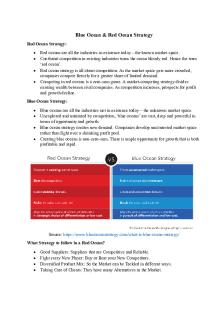Highways of the ocean - jg jnvjvknvkonvok PDF

| Title | Highways of the ocean - jg jnvjvknvkonvok |
|---|---|
| Author | mike kaewae |
| Course | Human Biology |
| Institution | Nova Southeastern University |
| Pages | 2 |
| File Size | 58.1 KB |
| File Type | |
| Total Downloads | 62 |
| Total Views | 145 |
Summary
jg jnvjvknvkonvok...
Description
Highways of the Sea Lab Report Kimberly Mignocchi Rebecca Brewster 4/22/2020 Objective(s): The purpose of this lab was to use ocean currents to find where the nike shoes floated at sea. Hypothesis: (2 points) This should be a prediction that can be tested. You may use the if/then format to write your hypothesis. Procedure: (8 points) On the map below, locate and mark the locations of shoes provided in the data table. You may print your map and mark it by hand or copy it to a program to edit. Label each data point in chronological order from 1 to 11 on the map, and connect the data points with arrows.
Data: Conclusion: (20 points) 1.Define the following terms: (2 points) a.Current - describes the continuous motion of the ocean from one place to another b.Gyre - large system of circulating ocean currents
a.Using the map and the data points, what can you conclude about the general pathway the shoes took? (2 points) The map and data points show, the shoes fell in the North Pacific Gyre.
a.Compare the pathway of the shoes to the map showing the major surface currents in the Pacific. Which current(s) did the shoes most likely encounter? Add these to your map above. (2 points) The shoes were most likely to encounter the North Pacific Gyre. Other nearby currents include, the Kuroshio and North Equatorial.
a.Which data point is an outlier? What may have happened to this batch of shoes? (2 points) The 10th data point was an outlier. They stayed or got broken up.
a.How fast did the shoes travel? (4 points)
b.From where the shoes spilled (48°N, 161°W) to where they first made landfall (49°N, 126°W), how many kilometers did they travel? How many days did they take to travel that distance? (You can use November 30 as the date found). What was their rate of travel in kilometers per hour? The shoes traveled 2557 km and it took them 187 days to move. All in all, the rate of travel for the Nike shoes was 1.75 km/hr.
c.From where the shoes spilled (48°N, 161°W) to where they were found in 1996 (54°N, 133°W), how many kilometers did they travel? How many days did they take to travel that distance (use April 30 as the date found)? What was their rate of travel in kilometers per hour? In 1996 the shoes traveled 2052 km and it needed 2165 days. The rate was 25.32 km/hr. a.The shoes traveled faster than the rubber ducks and bath toys. Propose a hypothesis to explain the why the shoes traveled faster, and develop a plan to test your prediction. (2 points) One possibility to why the shoes moves faster than the rubber ducks and bath toys, is that they were heavier and therefore moved with momentum in the currents. If the shoes have more mass than the ducks, then they will have a quicker rate of travel. To test this hypothesis, i would race a rubber duck and nike shoe in a flat water slide or slip n’ slide.
a.The shoes floated low in the water, while the ducks floated high in the water. How could this fact have changed the course and speed of both the shoes and the ducks? (2 points) The shoes may move faster underwater, causing it to be faster than the ducks.
a.Give a possible explanation why some shoes drifted northward along the coast while others drifted southward. (2 points) The shoes may have been separated and taken into different currents, explaining why several shoes ended up north versus south.
a.Your friend has invited you onto her family’s boat for a day of fishing. After lunch on the boat, your friend wants to throw a bag of trash overboard. After researching the impact currents have on objects, explain what you would do in this situation and why. (2 points) I would take the trash out of the water. Knowing currents, i would understand that the trash will circulate around, ending up deeper in the ocean where animals can mistake it for food....
Similar Free PDFs

C09 Circulation of the Ocean
- 19 Pages

Ch 11 The Living Ocean
- 10 Pages

Summary of Blue Ocean Strategy
- 28 Pages

C18 The Ocean and the Environment
- 19 Pages

Ocean Acidification
- 2 Pages

Ocean Thermal Energy Conversion
- 5 Pages
Popular Institutions
- Tinajero National High School - Annex
- Politeknik Caltex Riau
- Yokohama City University
- SGT University
- University of Al-Qadisiyah
- Divine Word College of Vigan
- Techniek College Rotterdam
- Universidade de Santiago
- Universiti Teknologi MARA Cawangan Johor Kampus Pasir Gudang
- Poltekkes Kemenkes Yogyakarta
- Baguio City National High School
- Colegio san marcos
- preparatoria uno
- Centro de Bachillerato Tecnológico Industrial y de Servicios No. 107
- Dalian Maritime University
- Quang Trung Secondary School
- Colegio Tecnológico en Informática
- Corporación Regional de Educación Superior
- Grupo CEDVA
- Dar Al Uloom University
- Centro de Estudios Preuniversitarios de la Universidad Nacional de Ingeniería
- 上智大学
- Aakash International School, Nuna Majara
- San Felipe Neri Catholic School
- Kang Chiao International School - New Taipei City
- Misamis Occidental National High School
- Institución Educativa Escuela Normal Juan Ladrilleros
- Kolehiyo ng Pantukan
- Batanes State College
- Instituto Continental
- Sekolah Menengah Kejuruan Kesehatan Kaltara (Tarakan)
- Colegio de La Inmaculada Concepcion - Cebu









